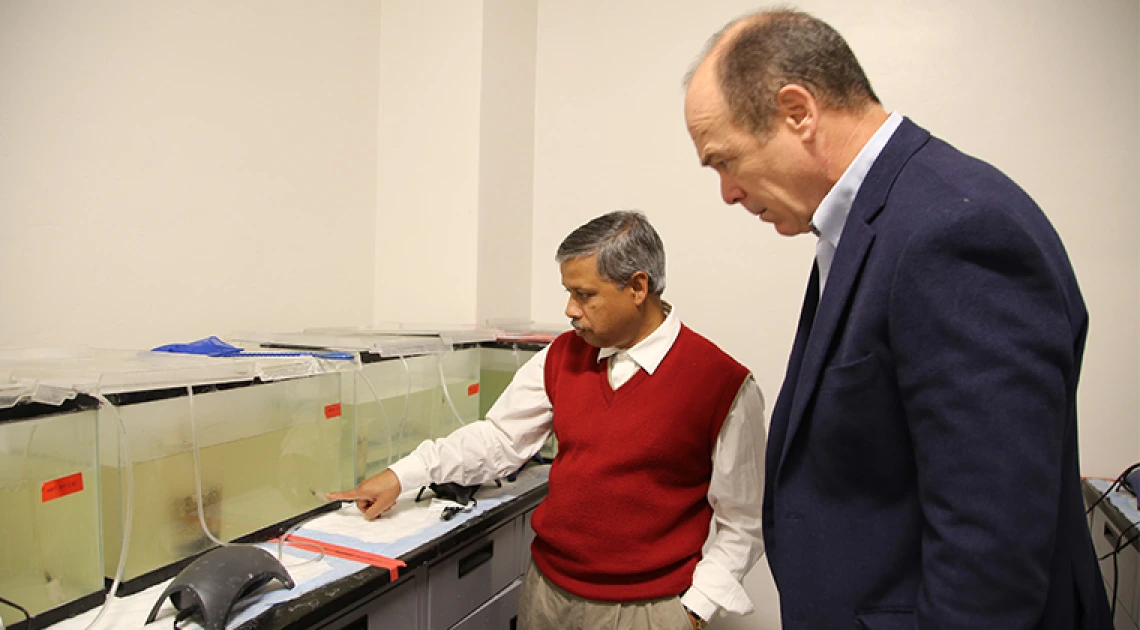UArizona Licenses Anti-Viral Treatment for Animal Disease

TUCSON, Ariz. – A researcher at the University of Arizona College of Agriculture and Life Sciences has invented a new treatment for preventing the spread of viral pathogens in animals, including shrimp farm populations, using genome editing tools. Initially targeting white spot syndrome virus (WSSV), a widespread and lethal shrimp virus which causes white spot disease, Arun K. Dhar, Ph.D., Associate Professor and Director of the Aquaculture Pathology Laboratory, led the development of the technology that cripples the virus, thus preventing infection.
“White spot disease is a threat to sustainable shrimp aquaculture globally,” Dhar said, “In addition to shrimp, the virus infects a wide array of aquatic invertebrates and poses a threat to aquatic ecosystems.”
According to Dhar, there is no commercially available therapy against WSSV.
Through Tech Launch Arizona (TLA), the UArizona office that commercializes inventions stemming from research, the university has protected the intellectual property for the invention and licensed it to Utah-based Cibus Biotechnologies for further development.
“We are pleased to be working with Dr. Dhar and the University of Arizona on this important project,” said Cibus Biotechnologies C.E.O. Jared Bauer. “While our initial focus is to develop a treatment for African Swine Fever (ASF) and WSSV, we see potential for broad application in animal health.”
For WSSV, the UArizona-developed viral treatment is delivered to the shrimp via feed. When the pathogen attacks the treated shrimp, it is rendered harmless and unable to create an infection.
“In his work with co-inventor Thomas Allnutt, Ph.D., Professor Dhar found a way to address the problem that doesn't genetically change the shrimp in any way,” says Tod McCauley, Ph.D., Sr. Licensing Manager for TLA, the UArizona office that commercializes inventions stemming from research. “This method renders the pathogen harmless by cutting off pathogenesis.”
Named for the white spots the infection causes on the exoskeleton, symptoms of WSSV include a sudden reduction in food consumption, lethargy and reddish discoloration. The characteristic white spots are caused by the accumulation of calcium salts in the cuticle as it loosens due to the infection. The virus commonly wipes out entire populations of shrimp farms within a few days.
First found in Taiwan in 1992, the virus spread to Japan and throughout Asia, and was first detected in the U.S. at a Texas shrimp farm in 1995. Industry experts estimate annual losses resulting from the virus to be approximately $1 billion U.S.

